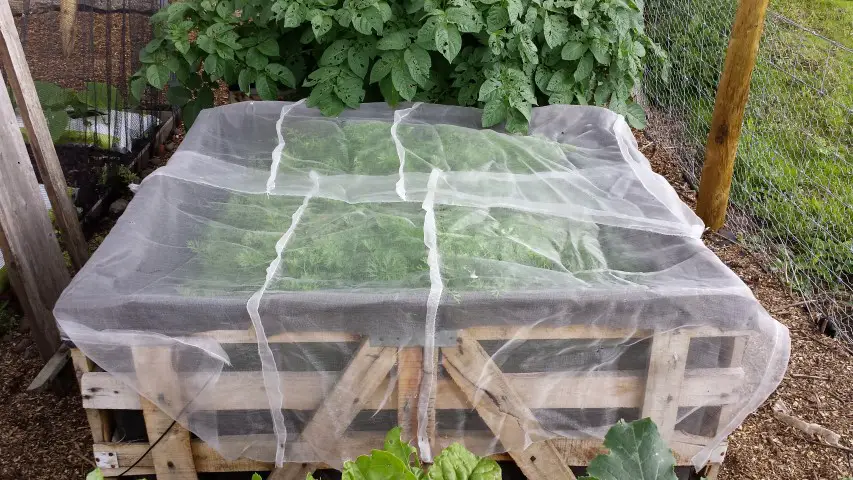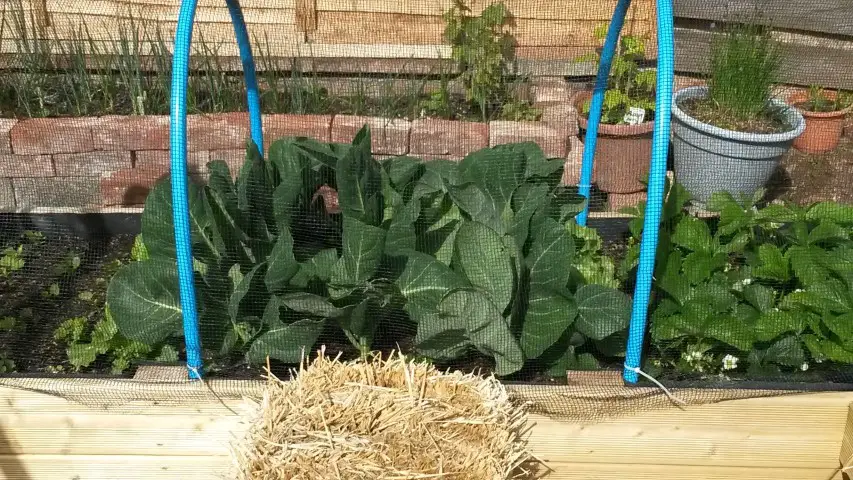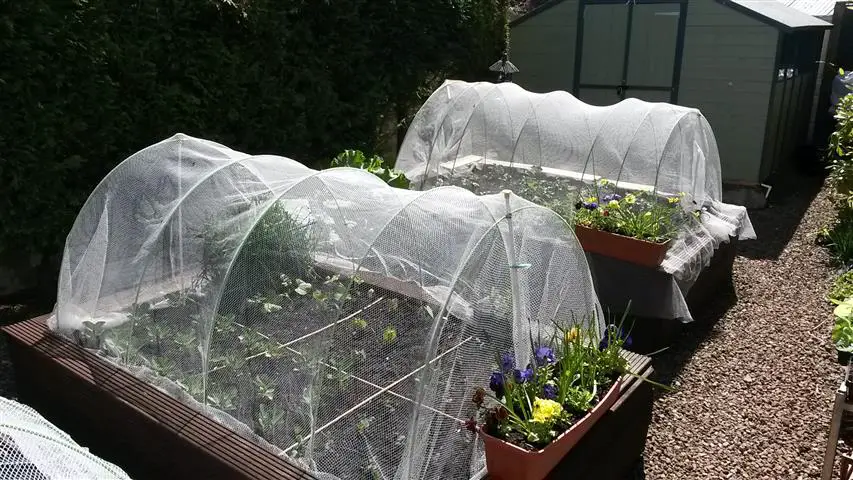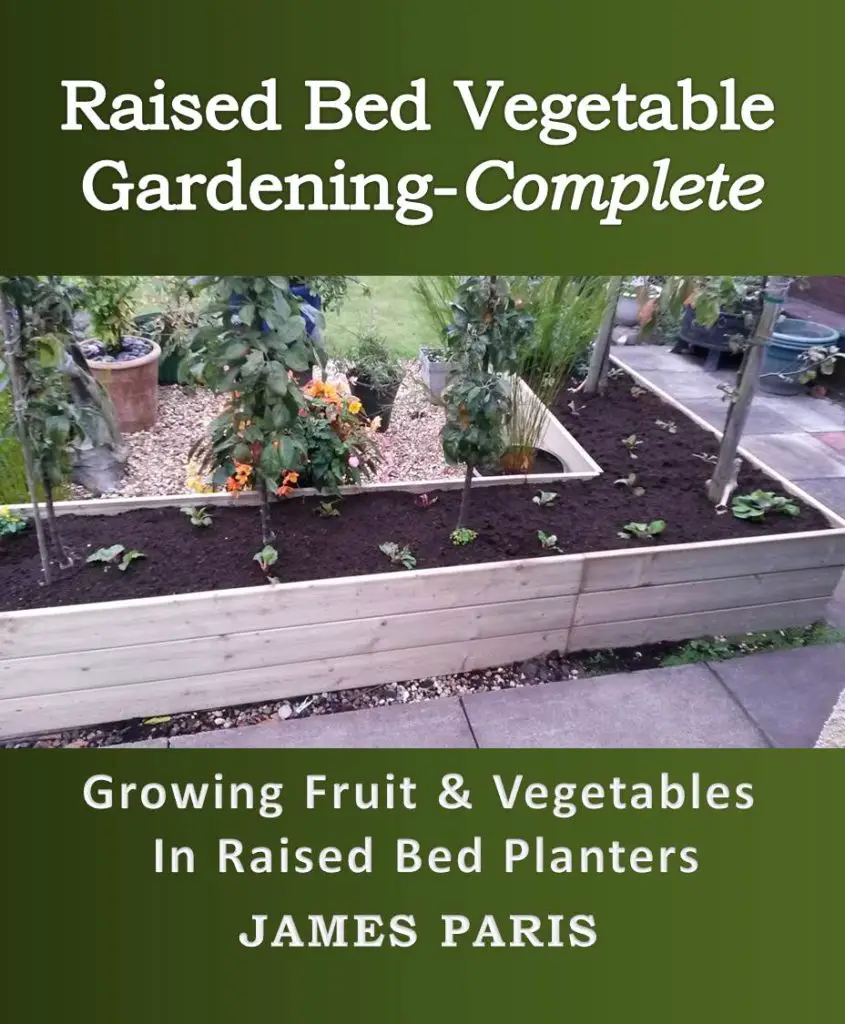Protecting your vegetables against insect attack and adverse weather conditions is an absolute priority if you want to get the best results from your vegetable growing efforts. And the question of whether or not to use fleece or Enviromesh protection is something that will undoubtably arise when the growing season begins.
So what is Enviromesh and how does it differ from garden fleece or horticultural fleece as it is also known?
Enviromesh is basically a very fine mesh made from UV stabilised polyethylene. It is particularly used to protect against small insect attack such as may come from the carrot fly, white fly or flea beetle, and to a lesser extent it is used to give some protection from the elements.
How long does Enviromesh last? This is a very strong and resilient material that should give 5 to 8 years protection, and maybe even longer in better conditions and treated with care. The mesh can be washed with soap and water to clean up any green mould or dirt at the end of the season – this too will help with the longevity of the mesh.
Just like most plant covers, Enviromesh does need to be supported to give the best protection levels as any mesh laying on the plant it is meant to protect, can result in insect damage to the part of the plant in contact and therefore reach of the insects.
The mesh itself does allow for the penetration of water, and for air to pass through with little obstruction. This quality can be a great advantage to reduce the chances of mould or fungus growth owing to poor ventilation.
As for Horticultural fleece and what it offers to the vegetable gardener. In many ways it is the same as the Enviromesh but with the added addition that fleece can be used to protect against cold weather in particular.
The fleece in effect creates a greenhouse effect where the heat of the sun can penetrate and be captured by the insulative qualities of the fleece. This is of particular interest to those wanting to extend the growing season or to ‘steal a march’ on the competition and plant earlier than the conditions would normally allow.
Using fleece for insect protection is also within the remit of garden fleece. Not only small insects like the carrot fly or potato beetle, but also against the cabbage white butterfly – that scourge of brassica crops in particular.

Like the Enviromesh, horticultural fleece also allows for the ingress of water as it is water permeable. This is to a lesser extent than the mesh, but it is entirely suitable in most cases.
The advantage of the heat retention however, has to be balanced against the poor ventilation as the fleece is a poor ventilator compared to the mesh. However it must be added at this point that the fleece is mainly used for earlier cooler season crops where fungus may not be such a problem as it can be with crops facing a warm humid summer for instance.
where fungus may not be such a problem as it can be with crops facing a warm humid summer for instance.
The lifetime of horticultural fleece tends to be only 2-3 years on average. This is why the more expensive Enviromesh may prove to be a more economical choice in the long run – if that is indeed the best choice for you.
Is fleece or mesh better for raised beds?
Here we come to the crux of the question, and it really depends on 2 main things.
- What are you planning to grow in your raised bed
- How high is the raised bed
For example if you have a raised bed garden that is over 24 inches high and you plan to grow carrots but are afraid of the carrot fly, you do not need to use Enviromesh or fleece at all because the carrot fly is a low flier and does not fly above 18 inches to 24 inches maximum.
Are there exceptions to this ‘golden rule’? Of course – a light breeze could in theory lift the fly up and into your raised bed. This is very possible but unlikely in most cases. If however you want to be sure about it, you will certainly do no harm by covering your crop with either covering.
If you are growing brassicas or indeed you have a shallow raised bed garden, then covering your crops with either fleece or Enviromesh is always recommended – especially in exposed areas (for fleece) or where the carrot fly is prevalent (for Enviromesh).
Whenever I am growing cabbages or broccoli for instance, I always cover my plants with horticultural fleece to protect against butterfly caterpillars. There is nothing more off-putting than picking caterpillars from the heads of broccoli when preparing them for the dinner table! And the green slimy poop from a caterpillar on the white heads of your cauliflower is not a good look at all – just cover with fleece and don’t risk it.
The best support for fleece or mesh

In truth anything can be used to support your mesh or fleece covering. The main thing is that it is strong enough to take the weight (think heavy rain) and wind forces. Also that you create a support high enough to clearly cover your plants.
This is especially the case if you are using a wider butterfly mesh that may allow the butterfly to land on the mesh and lay their eggs on the plant leaves pressed up against it.
Personally I like to use plumbers plastic pipe as you may see in the picture. This is cheap to buy and easy to attach to a raised bed by screwing directly through the plastic into the wooden structure.
It is easy to create a high loop system that will withstand the wind, and it is easier still to attach butterfly mesh using cable ties to the loops.
You can also exchange mesh or fleece with polythene to create your own raised bed polytunnel where you may extend the growing period for at least a couple of months overall.
polytunnel where you may extend the growing period for at least a couple of months overall.
Conclusion
For growing carrots and other vegetables prone to small insect attack then the Enviromesh would be my choice. If you are protecting against wind or butterfly attack then the horticultural fleece (wind) or butterfly mesh would do just fine.




